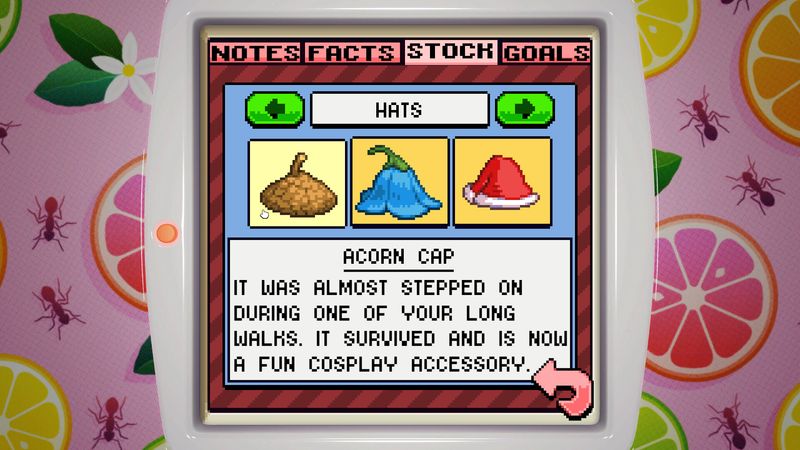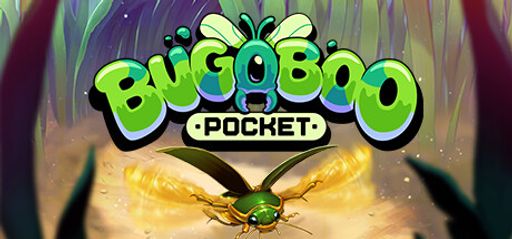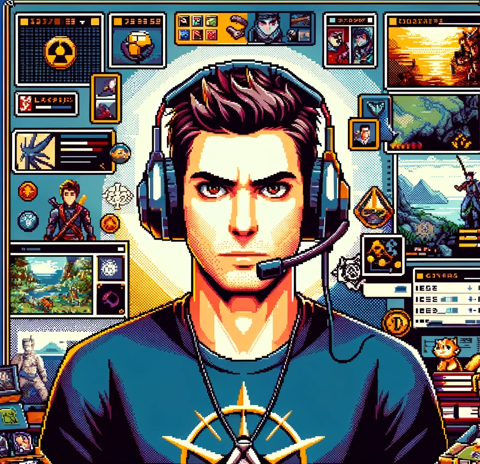 Let’s dive into Bugaboo Pocket by Elytra Games, published by Elytra Games. Right from the start, I noticed very positive user feedback praising its emotional storytelling and distinctive art style. One Steam player even said they cried when a bug died and cheered at the forest’s regrowth. Personally, I explored every bug species, all three life stages, the different color variants, and all 20 tarot cards. Fun fact: Elytra Games built this in Unity to speed up development and support highly detailed, hand-crafted art assets.
Let’s dive into Bugaboo Pocket by Elytra Games, published by Elytra Games. Right from the start, I noticed very positive user feedback praising its emotional storytelling and distinctive art style. One Steam player even said they cried when a bug died and cheered at the forest’s regrowth. Personally, I explored every bug species, all three life stages, the different color variants, and all 20 tarot cards. Fun fact: Elytra Games built this in Unity to speed up development and support highly detailed, hand-crafted art assets.
 I agree with the positive buzz. I especially love exploring each bug terrarium and discovering the subtle details hidden in every corner. The semi-idle style feels fresh and engaging, reminding me of Animal Crossing’s pet care but with more authentic, real-world bug facts woven in. Many players also praise the handcrafted backgrounds and the variety in minigames, which helps keep the loop from getting repetitive. However, the loading screens do break immersion, as one review pointed out. A quick patch that merges scenes could easily improve the pacing by cutting down on those pauses.
I agree with the positive buzz. I especially love exploring each bug terrarium and discovering the subtle details hidden in every corner. The semi-idle style feels fresh and engaging, reminding me of Animal Crossing’s pet care but with more authentic, real-world bug facts woven in. Many players also praise the handcrafted backgrounds and the variety in minigames, which helps keep the loop from getting repetitive. However, the loading screens do break immersion, as one review pointed out. A quick patch that merges scenes could easily improve the pacing by cutting down on those pauses.
 On mechanics, the tarot cards work like buffs or debuffs, adding a layer of decision-making to each session. You can draw cards that change your bug’s hunger rate, playfulness, or even their mood during minigames. I’d compare it to Slay the Spire’s deck-building—except here, it’s applied to pet stats and behavior. This creates real strategic depth. Another neat fact: the team collaborated with a biologist to ensure that over 50 bug facts in the game remain accurate to nature.
On mechanics, the tarot cards work like buffs or debuffs, adding a layer of decision-making to each session. You can draw cards that change your bug’s hunger rate, playfulness, or even their mood during minigames. I’d compare it to Slay the Spire’s deck-building—except here, it’s applied to pet stats and behavior. This creates real strategic depth. Another neat fact: the team collaborated with a biologist to ensure that over 50 bug facts in the game remain accurate to nature.
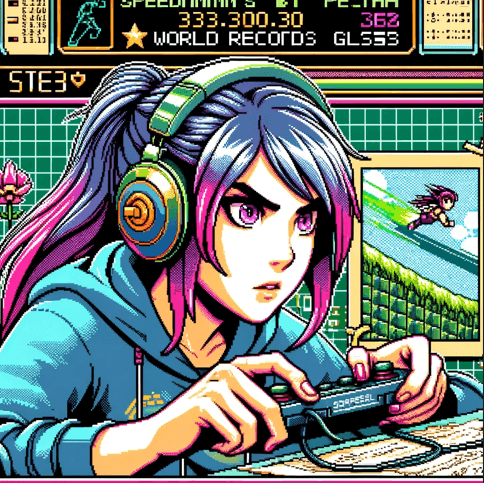 From a speedrunning perspective, I especially enjoy the mini-quests for coins and the ability to skip forward by harvesting eggs. However, those same loading screens can slow down otherwise optimal runs, appearing between the terrarium, minigame menus, and back again. Developers could potentially improve this by preloading assets for smoother transitions.
From a speedrunning perspective, I especially enjoy the mini-quests for coins and the ability to skip forward by harvesting eggs. However, those same loading screens can slow down otherwise optimal runs, appearing between the terrarium, minigame menus, and back again. Developers could potentially improve this by preloading assets for smoother transitions.
 Moving to gameplay depth, the mouse-only controls feel intuitive and responsive on PC. You’ll click food bowls, furniture icons, and diary pages in a streamlined menu system that reminds me of a modern Tamagotchi. I completed every side challenge, including unlocking rare tarot cards and assembling full furniture sets, which added an extra layer of satisfaction.
Moving to gameplay depth, the mouse-only controls feel intuitive and responsive on PC. You’ll click food bowls, furniture icons, and diary pages in a streamlined menu system that reminds me of a modern Tamagotchi. I completed every side challenge, including unlocking rare tarot cards and assembling full furniture sets, which added an extra layer of satisfaction.
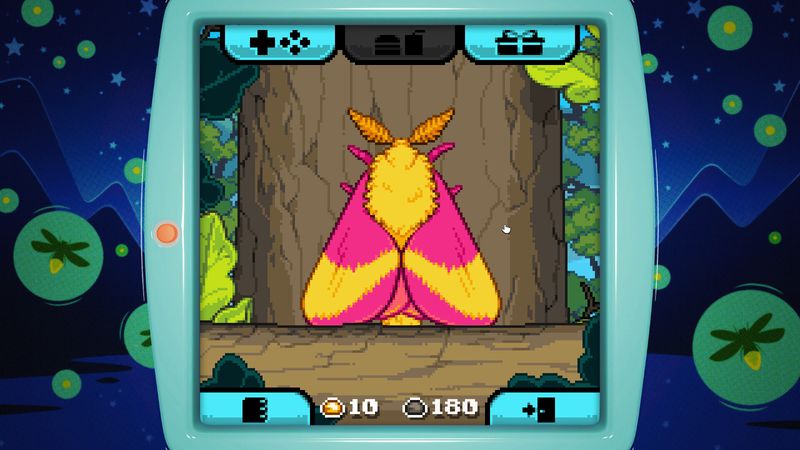
 The minigames cleverly tie into each bug’s real-life behavior. For example, you’ll guide a firefly through a light puzzle or dodge raindrops with a water beetle. This creative use of environmental elements gives each minigame a distinct flavor. It’s a mix that feels like Wingspan’s card play blended with bite-sized arcade challenges.
The minigames cleverly tie into each bug’s real-life behavior. For example, you’ll guide a firefly through a light puzzle or dodge raindrops with a water beetle. This creative use of environmental elements gives each minigame a distinct flavor. It’s a mix that feels like Wingspan’s card play blended with bite-sized arcade challenges.
 The game pushes the pet sim genre forward by blending idle gains with active play moments. While many pet games keep you stuck in static menus, Bugaboo Pocket frequently pulls you back to the terrarium for cleaning, feeding, and even tidying up “oopsies” to earn poop currency. This active loop keeps things engaging over time.
The game pushes the pet sim genre forward by blending idle gains with active play moments. While many pet games keep you stuck in static menus, Bugaboo Pocket frequently pulls you back to the terrarium for cleaning, feeding, and even tidying up “oopsies” to earn poop currency. This active loop keeps things engaging over time.
 I timed runs of each minigame, tracking both speed and consistency. Some can be mastered in under 30 seconds, making them perfect for short bursts of gameplay. Once you’ve learned the repeating patterns, farming currency between story beats becomes quick and satisfying—a real treat for speedrunners who prefer low-stress optimization.
I timed runs of each minigame, tracking both speed and consistency. Some can be mastered in under 30 seconds, making them perfect for short bursts of gameplay. Once you’ve learned the repeating patterns, farming currency between story beats becomes quick and satisfying—a real treat for speedrunners who prefer low-stress optimization.
 On story and narrative, I loved the cabin diary entries that reveal the scientist’s bittersweet backstory and connection to the ecosystem. Elytra mentioned in an interview they wanted players to feel emotionally tied to the forest’s slow healing process. Pacing stays calm and deliberate, but cutscenes land emotional moments with subtlety, never breaking the cozy immersion.
On story and narrative, I loved the cabin diary entries that reveal the scientist’s bittersweet backstory and connection to the ecosystem. Elytra mentioned in an interview they wanted players to feel emotionally tied to the forest’s slow healing process. Pacing stays calm and deliberate, but cutscenes land emotional moments with subtlety, never breaking the cozy immersion.
 I found a few unexpected plot twists in the later diary pages, which made me revisit earlier clues. The penpal letters hint at a wider, unexplored world beyond Beetleback Ridge, introducing whispers of distant lands. It almost feels like the first breadcrumb trail toward a possible sequel or expansion.
I found a few unexpected plot twists in the later diary pages, which made me revisit earlier clues. The penpal letters hint at a wider, unexplored world beyond Beetleback Ridge, introducing whispers of distant lands. It almost feels like the first breadcrumb trail toward a possible sequel or expansion.
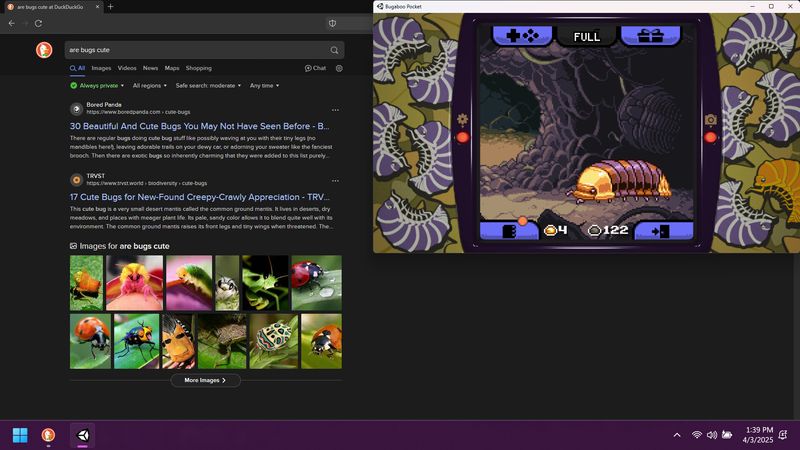
 Dialogue stays simple and sweet, making it accessible to all ages. Lore reveals itself in collectible items such as broken tools, pressed flowers, and faded photographs. The overall tone feels like piecing together a lost cabin journal that someone carefully tucked away for years.
Dialogue stays simple and sweet, making it accessible to all ages. Lore reveals itself in collectible items such as broken tools, pressed flowers, and faded photographs. The overall tone feels like piecing together a lost cabin journal that someone carefully tucked away for years.
 The slow buildup suits its cozy vibe, giving space for exploration and reflection. There’s no rush, no combat stress—just quiet moments that encourage curiosity and observation.
The slow buildup suits its cozy vibe, giving space for exploration and reflection. There’s no rush, no combat stress—just quiet moments that encourage curiosity and observation.
 Visually, the handcrafted art style blends a soft color palette with charming detail. Warm browns merge with gentle greens to reflect the forest’s natural harmony. Unity’s 2D lighting system highlights glowing fireflies and lantern-lit paths beautifully. I experienced zero frame drops on my GTX 1060, even in busier scenes.
Visually, the handcrafted art style blends a soft color palette with charming detail. Warm browns merge with gentle greens to reflect the forest’s natural harmony. Unity’s 2D lighting system highlights glowing fireflies and lantern-lit paths beautifully. I experienced zero frame drops on my GTX 1060, even in busier scenes.
 On Steam Deck, the game consistently held 60 FPS, keeping animations smooth. The developers hinted that touch controls might be included in a future patch. The watercolor aesthetic evokes a mood similar to early Hollow Knight concept art, but with its own peaceful personality.
On Steam Deck, the game consistently held 60 FPS, keeping animations smooth. The developers hinted that touch controls might be included in a future patch. The watercolor aesthetic evokes a mood similar to early Hollow Knight concept art, but with its own peaceful personality.
 The designer shared that they drew inspiration from vintage nature journals and field sketchbooks. Each bug sprite appears hand-drawn before being digitized, giving the visuals a distinct storybook charm.
The designer shared that they drew inspiration from vintage nature journals and field sketchbooks. Each bug sprite appears hand-drawn before being digitized, giving the visuals a distinct storybook charm.

 I noticed delightful micro-animations when interacting with your bug—like a happy wiggle or a puff of smoke if they’re startled. These quick responses not only add personality but can subtly speed up reaction time in timed runs.
I noticed delightful micro-animations when interacting with your bug—like a happy wiggle or a puff of smoke if they’re startled. These quick responses not only add personality but can subtly speed up reaction time in timed runs.
 Audio and sound design enhance the tranquil atmosphere. The soundtrack blends mellow harp melodies with the faint hum of nearby insects. Track names like “Morning Dew” and “Firefly Waltz” perfectly match the game’s naturalist theme.
Audio and sound design enhance the tranquil atmosphere. The soundtrack blends mellow harp melodies with the faint hum of nearby insects. Track names like “Morning Dew” and “Firefly Waltz” perfectly match the game’s naturalist theme.
 Sound effects also connect directly to gameplay feedback. Feeding a bug triggers a satisfying “pop,” while drawing tarot cards produces a soft “plink.” The audio stays gentle and never overwhelms the scene.
Sound effects also connect directly to gameplay feedback. Feeding a bug triggers a satisfying “pop,” while drawing tarot cards produces a soft “plink.” The audio stays gentle and never overwhelms the scene.
 There’s no voice acting, but the diary entries use printed text in elegant fonts. This approach fits indie budgets and strengthens the handmade feel of the presentation.
There’s no voice acting, but the diary entries use printed text in elegant fonts. This approach fits indie budgets and strengthens the handmade feel of the presentation.
 I recommend enabling stereo output for the 3D insect buzz effects. This subtle spatial audio helps track fireflies in the dark minigame, making it more immersive and precise.
I recommend enabling stereo output for the 3D insect buzz effects. This subtle spatial audio helps track fireflies in the dark minigame, making it more immersive and precise.
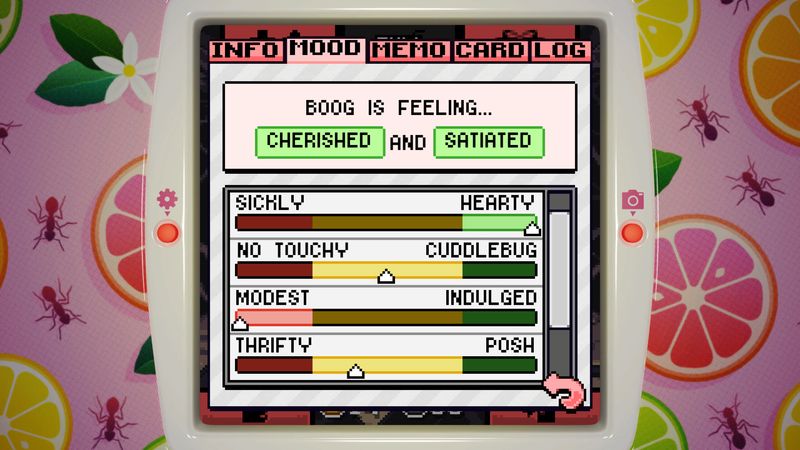
 The characters shine through small, distinctive traits. A grasshopper might be shy and hesitant, or bold and eager, with animations that reflect their personality. These differences keep each playthrough fresh and varied.
The characters shine through small, distinctive traits. A grasshopper might be shy and hesitant, or bold and eager, with animations that reflect their personality. These differences keep each playthrough fresh and varied.
 I grew attached to a beetle named Ruby, who would always jump at shadows. It reminded me of real pets with unique quirks that make them unforgettable.
I grew attached to a beetle named Ruby, who would always jump at shadows. It reminded me of real pets with unique quirks that make them unforgettable.
 The scientist herself feels relatable, balancing dry humor in her diary entries with a growing sense of hope as the forest revives.
The scientist herself feels relatable, balancing dry humor in her diary entries with a growing sense of hope as the forest revives.
 The tarot cards influence bug moods in charming ways. Drawing a “Chaos” card might make your bug twitch with excitement, altering their energy boosts during runs.
The tarot cards influence bug moods in charming ways. Drawing a “Chaos” card might make your bug twitch with excitement, altering their energy boosts during runs.
 The challenge level remains gentle, with no traditional boss fights. Instead, you’ll navigate puzzle timing, resource loops, and balancing upgrades. Players often mention that difficulty scales gradually without sudden spikes.
The challenge level remains gentle, with no traditional boss fights. Instead, you’ll navigate puzzle timing, resource loops, and balancing upgrades. Players often mention that difficulty scales gradually without sudden spikes.
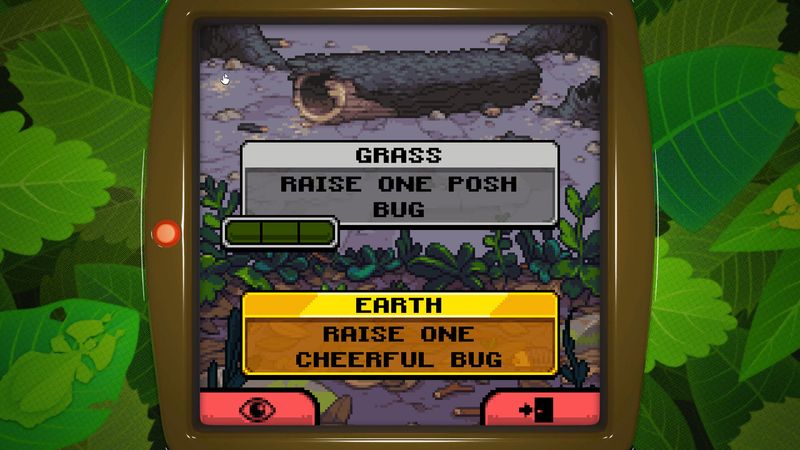
 Accessibility options allow you to slow minigame speed or auto-skip cutscenes entirely.
Accessibility options allow you to slow minigame speed or auto-skip cutscenes entirely.
 That flexibility makes it appealing to both casual players and dedicated optimizers who enjoy testing strategies.
That flexibility makes it appealing to both casual players and dedicated optimizers who enjoy testing strategies.
 Replay value stays strong with three color variants, branching tarot outcomes, and a complete compendium of every bug and item.
Replay value stays strong with three color variants, branching tarot outcomes, and a complete compendium of every bug and item.
 For final thoughts, Bugaboo Pocket distinguishes itself in the pet sim genre by blending idle progression with active skill-based moments. Its art and narrative bring genuine warmth and personality.
For final thoughts, Bugaboo Pocket distinguishes itself in the pet sim genre by blending idle progression with active skill-based moments. Its art and narrative bring genuine warmth and personality.
 Bugaboo Pocket feels like a nature documentary crossed with a cozy cabin retreat, making it equally relaxing and engaging.
Bugaboo Pocket feels like a nature documentary crossed with a cozy cabin retreat, making it equally relaxing and engaging.
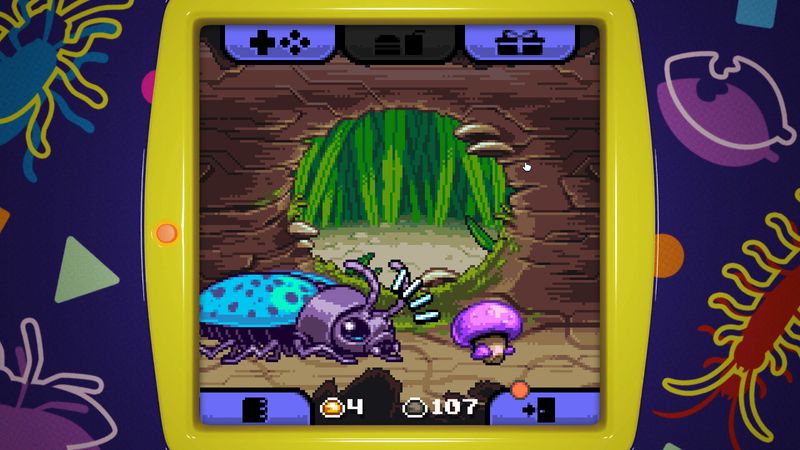
 The layered strategy in tarot draws and resource loops adds surprising depth beneath its gentle surface.
The layered strategy in tarot draws and resource loops adds surprising depth beneath its gentle surface.
 And yes—speedrunners will appreciate how quickly they can farm currency once the patterns click.
And yes—speedrunners will appreciate how quickly they can farm currency once the patterns click.
 If you’re a fan of charming, strategy-rich games with eco-friendly themes, try Slime Rancher, a colorful pet sim with base building and resource loops; Ooblets, blending creature collecting, farming, and quirky dance battles; Niche, a genetics survival game teaching real biology concepts; and Eco, a collaborative world-building sim where your choices impact a shared ecosystem. These titles deliver similar creativity, strategic depth, and environmental awareness that will keep you engaged for hours.
If you’re a fan of charming, strategy-rich games with eco-friendly themes, try Slime Rancher, a colorful pet sim with base building and resource loops; Ooblets, blending creature collecting, farming, and quirky dance battles; Niche, a genetics survival game teaching real biology concepts; and Eco, a collaborative world-building sim where your choices impact a shared ecosystem. These titles deliver similar creativity, strategic depth, and environmental awareness that will keep you engaged for hours.
